A Gift to Last a Lifetime
By Liz Armstrong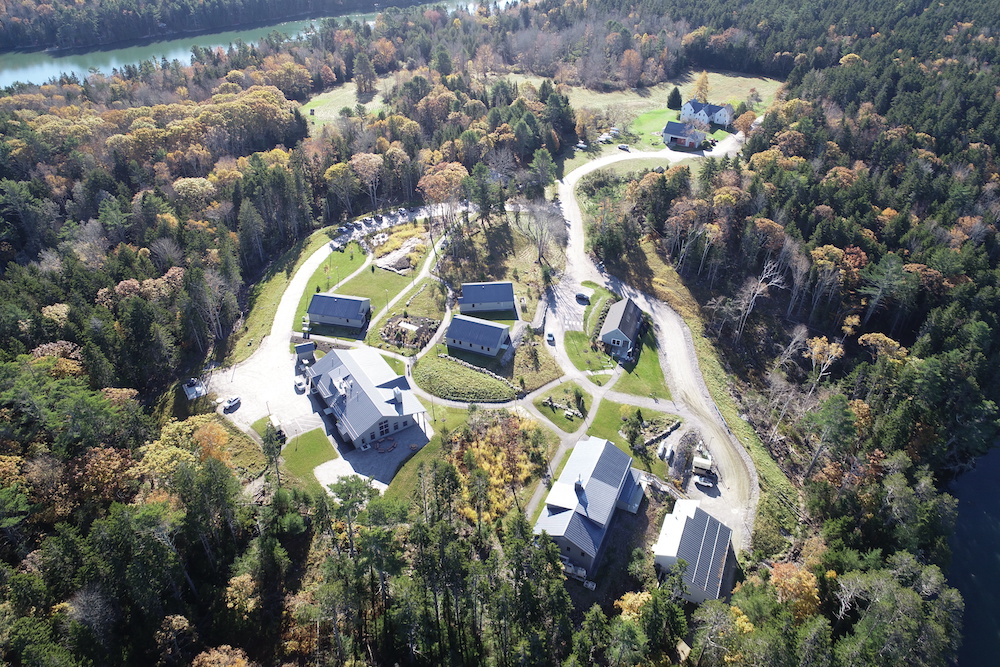
The gift was an unusual one in that ownership of the property was transferred but Haste and Irma retained the right to enjoy the property until their death or until they relinquished their life estate. The Thalheimers continued to use the property for several years. Haste passed away in 1986, and Irma relinquished her life estate in 1992 and then passed away in May 1994.
Haste and Irma had purchased the property in 1953 and enjoyed it as a summer home until Haste’s retirement in the late 1960s, at which time they moved permanently to the place they called “Hanson’s Point.” Much of the property was reclaimed forest with a small area of open field. Sited in the field area was an early-twentieth-century farmhouse and an English-style barn.
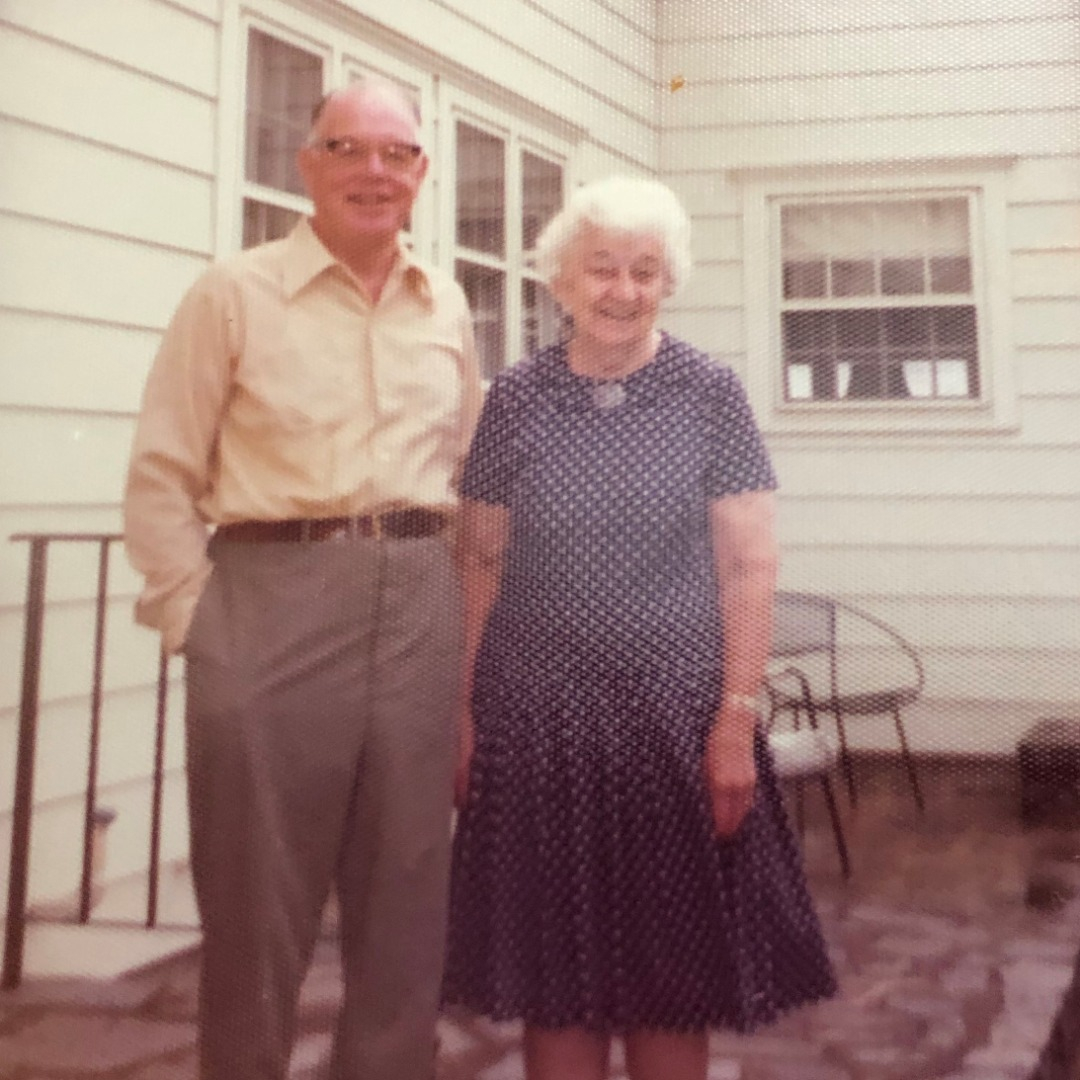
In 1964, the Thalheimers acquired the northeastern peninsula adjacent to their property, which is how the College has come to own this spectacular parcel consisting of two peninsulas with nearly two miles of undeveloped ocean frontage on Harpswell Sound, stunning ocean views, and direct access to the Gulf of Maine.
The property has an interesting history. The presence of two ancient shell middens discovered on it indicate it was the summer site of coastal gathering and fishing by Indigneous people. The late seventeenth century saw conflicts between Abenaki people and settlers. By the eighteenth century, the conflicts were mostly over, and the Commonwealth of Massachusetts was interested in settling the District of Maine.
According to Professor Emerita Sarah McMahon, James Orr, for whom the island was named shortly after his death in 1786, was the first resident of Little Sebascodegan Island. A Scots-Irish immigrant from Northern Ireland, Orr came to what is now Harpswell Neck with his parents and siblings in 1732 when he was twenty-one years old. Orr's effort to purchase the island involved several deeds and the settlement of conflicting land claims. By 1785, Orr owned all the acreage on the island.
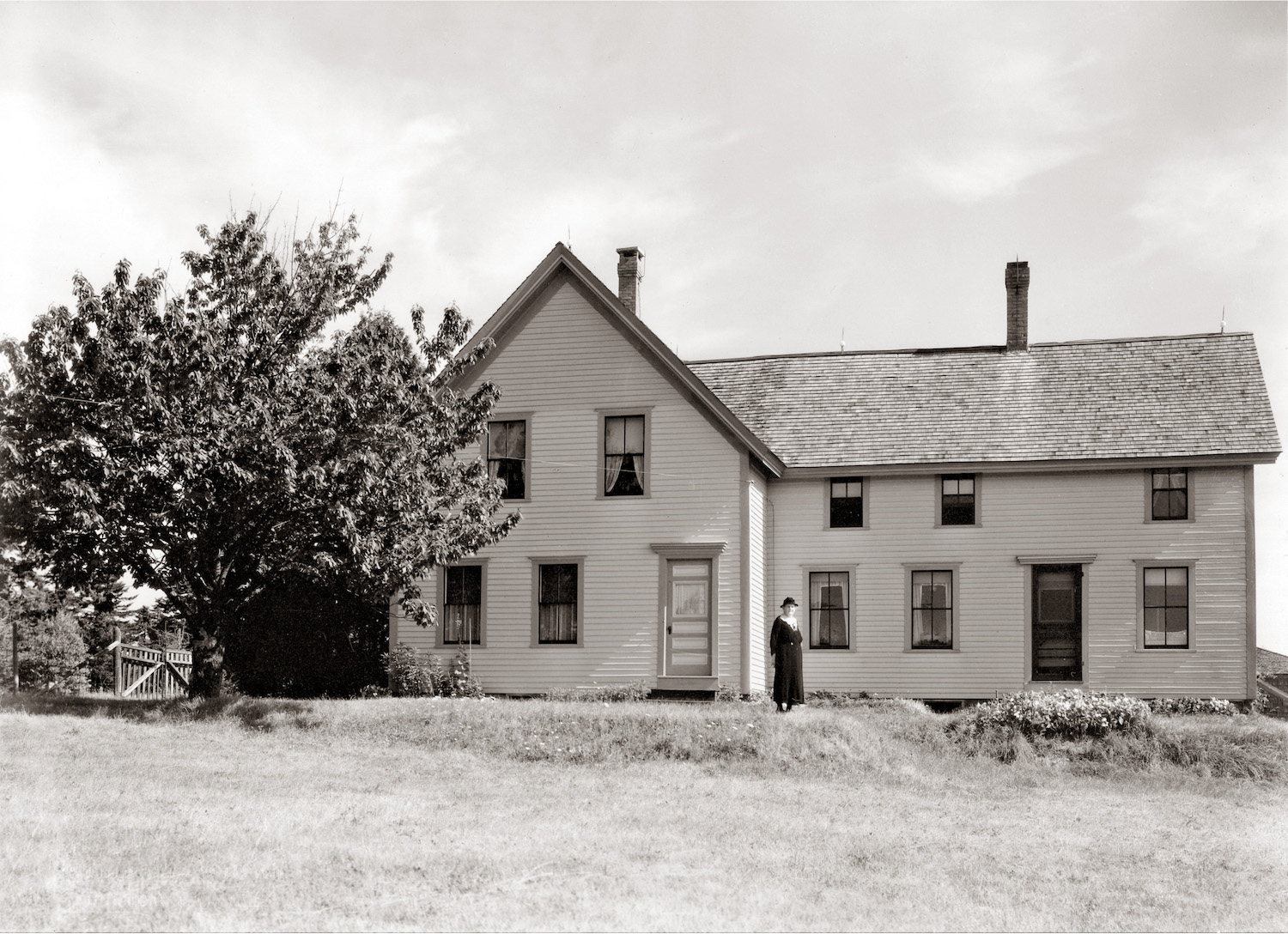
Shortly after Harpswell was incorporated in 1758, Joseph Orr married Mrs. Lettice Elliott Wyer, a widow with two children, Agnes and Robert, and settled them at a home and farm on the northern end of the island. While it is not certain if Joseph officially adopted Lettice’s children, it appears that he treated them as his own. In 1780, Robert Wyer purchased sixty acres at the northern end of the island that had previously been owned and then sold by Joseph. Joseph granted him an additional sixty acres along the southern end of the property boundary. This is the property that the Thalheimers acquired in 1953.
Robert began a long process of cutting trees and clearing land, eventually settling there with Agnes Ewing, whom he married in 1776. Robert became the first person to settle the land. He built the English-style, pegged-together barn on the property in the 1790s. More than 240 years later, what had been his farm is now the site of the Schiller Coastal Studies Center and is one of the largest unsubdivided coastal properties in Harpswell and the greater Casco Bay Region.
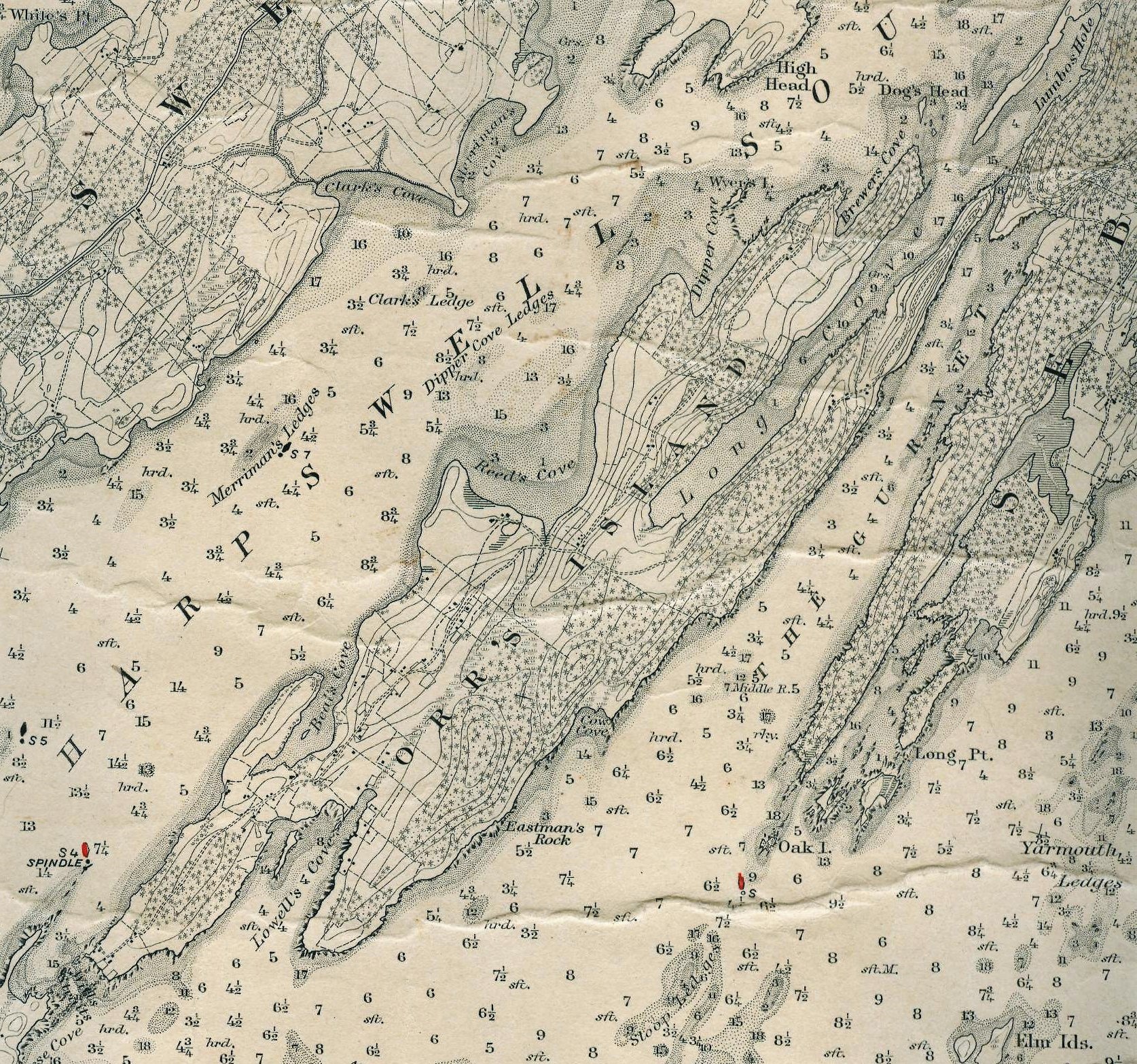
Professor McMahon's research reveals that three generations of Wyers farmed the property. Robert and Agnes had eight children and, following Robert’s death, their son James took over operating the farm and operated it for many years. After his mother died in 1851, James married a widow from Brunswick and moved into town. He deeded the farm to his two youngest children, who subsequently deeded it to their brother, Joseph Dunning Wyer, who, in 1893, sold the property to Louis Hanson, who had emigrated to Harpswell from Denmark.
In 1887, Louis married Ellen Roberts. The couple had three children and established a twenty-cow dairy farm on the property when they acquired the property. The Hansons lived in the Wyers’ old farmhouse which had only a fireplace for cooking and heating until around 1900 when Hanson tore it down.
If you visit the farmhouse at the present-day Schiller Coastal Studies Center, you will see a framed photo of Louis Hanson with white draft horses. The photo was given to the College by Irma Thalheimer. Before the bridge from Great Island to Orr’s Island was built, during exceptionally cold winters Harpswell Sound would freeze over. In late January 1893, Mr. Hanson drove a number of men in his wagon overland to Brunswick to visit a sick friend. According to an 1899 account by W. H. Doughty, the men received advice that they could safely cross Harpswell Sound on the ice. However, about 300 yards from shore, the horses pulling the wagon, one of which belonged to Mr. Hanson, fell through the ice. The men worked for an hour to rescue the horses but ultimately both horses died.
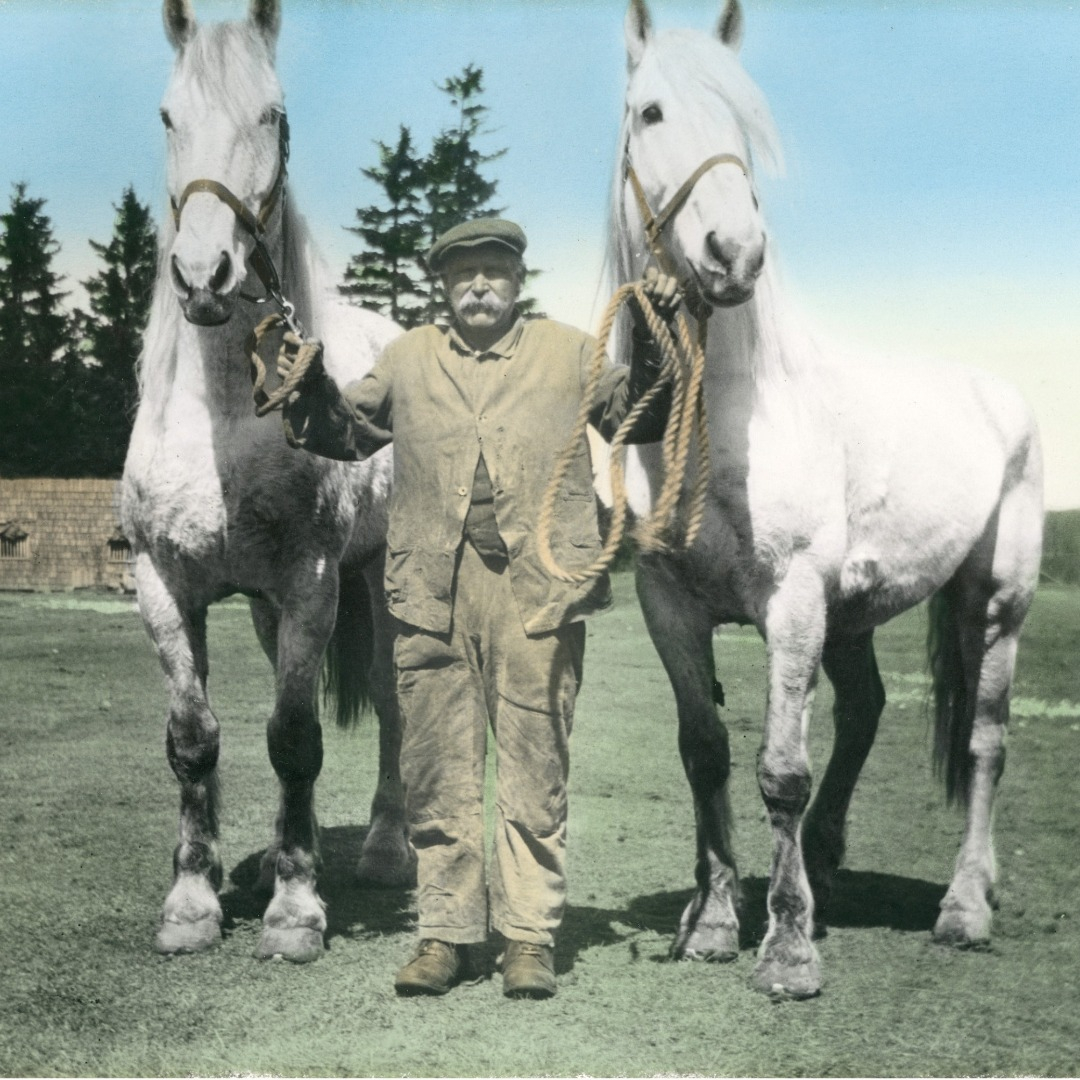
Louis Hanson died in 1931. In 1944, his widow sold the property to the Winnewisser brothers, Frederick and Paul, retirees who reportedly used the barn to work on a boat they were building. Nine years later, the Thalheimers purchased the property.
Haste and Irma's son, William "Bill" Thalheimer '55, recalled that his parents did not want the property to be developed into a housing subdivision. Haste, who grew up in Freeport, Maine, was always grateful for the scholarship that Bowdoin provided him. Both he and Irma felt the College would be a good steward of the property and would use it in a way that would be most productive and worthwhile. That has certainly been the case. The College worked with faculty and others to develop a plan for using the property as a natural lab for field- and laboratory-based learning and interdisciplinary studies. For more than three decades, Bowdoin faculty, students, postdoctoral scholars, and visiting researchers have used the property to monitor environmental changes in the Gulf of Maine and build a marine research network that contributes data collection to other institutions and universities around the world. Haste and Irma would be pleased.
*Special thanks to Associate Professor of History Emerita Sarah McMahon for sharing information about the history of the settlement of Harpswell and the land that is now the home of the Schiller Coastal Studies Center.



